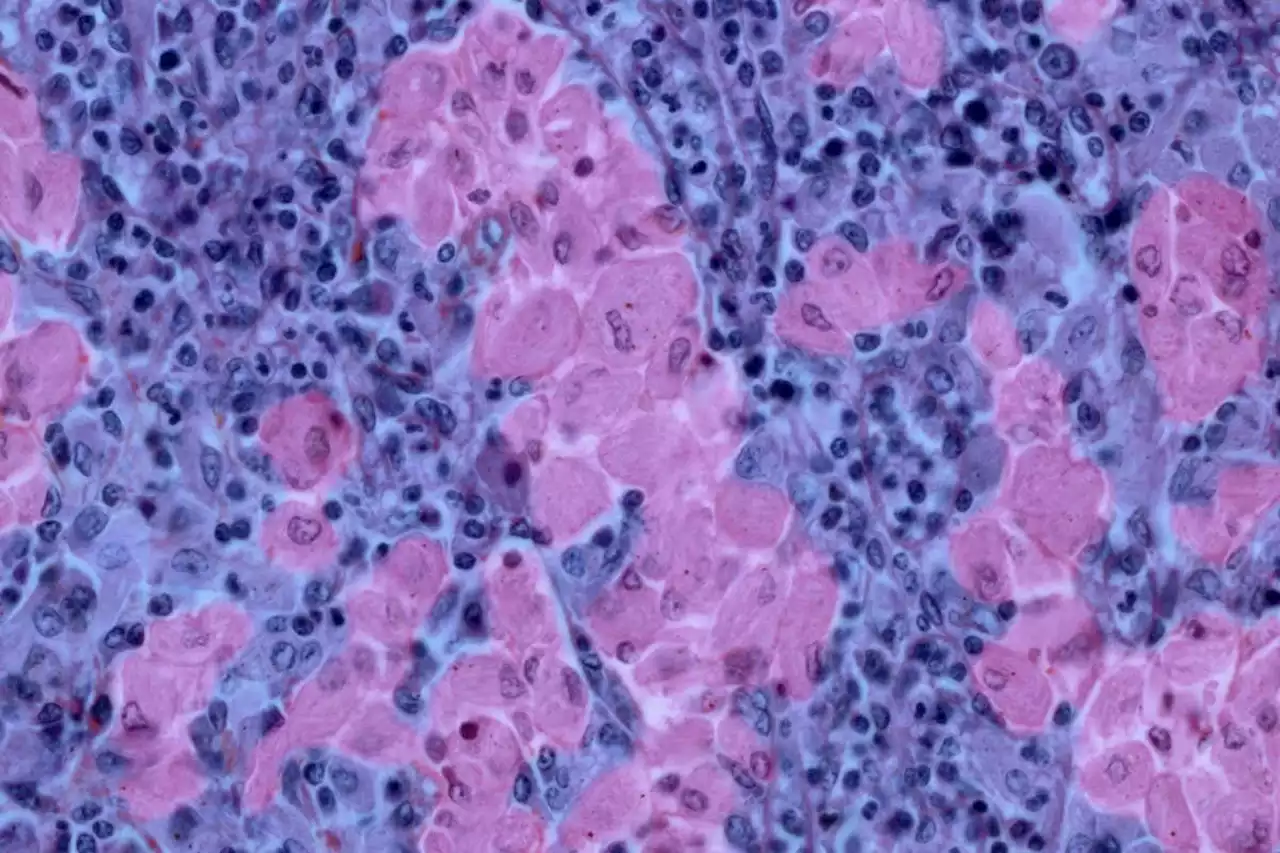You don't say, buddy.
with his gene-edited baby experiments back in 2018, a highly controversial use of the technology that ended up sending him to a three-year stint in prison for illegal medical practices."I did it too quickly," HeHis attempts to use the gene-editing technique CRISPR on three separate babies were designed to modify a gene called CCR5, which is known to offer resistance to the HIV virus.
Years — and a prison sentence — later, He is ready to speak out about the current state of the girls.. "This is their wish and we should respect them," he said, adding that "the happiness of the children and their families should come first."
Ireland Latest News, Ireland Headlines
Similar News:You can also read news stories similar to this one that we have collected from other news sources.
 IMPD releases edited body cam footage from Anthony Maclin shootingThe release comes a day after Maclin's family publicly called on the IMPD to release unedited footage from the Dec. 31 shooting.
IMPD releases edited body cam footage from Anthony Maclin shootingThe release comes a day after Maclin's family publicly called on the IMPD to release unedited footage from the Dec. 31 shooting.
Read more »
 Scientist Suggests Tweaks for Genetically Altered SupersoldiersIn a story about an upcoming gene editing conference, one of the summit's organizers admitted something kind of odd about military use of gene editing.
Scientist Suggests Tweaks for Genetically Altered SupersoldiersIn a story about an upcoming gene editing conference, one of the summit's organizers admitted something kind of odd about military use of gene editing.
Read more »
 Yale Honors 9-Year-Old Scientist after a neighbor called the police on her.9-year-old scientist, Bobbi Wilson and her mother Monique Joseph speak to Yasmin after Yale University honored Bobbi as a Donor Scientist, months after a neighbor called the cops on her for spraying invasive lantern flies in her neighborhood as part of her scientific investigations. 'It reconfirmed for me that Bobbi really is a scientist,' Joseph said.
Yale Honors 9-Year-Old Scientist after a neighbor called the police on her.9-year-old scientist, Bobbi Wilson and her mother Monique Joseph speak to Yasmin after Yale University honored Bobbi as a Donor Scientist, months after a neighbor called the cops on her for spraying invasive lantern flies in her neighborhood as part of her scientific investigations. 'It reconfirmed for me that Bobbi really is a scientist,' Joseph said.
Read more »
 Genes for Gaucher disease may have protected Jewish people against TBThe gene variants that lead to Gaucher disease helps immune cells kill tuberculosis bacteria, at least in zebrafish
Genes for Gaucher disease may have protected Jewish people against TBThe gene variants that lead to Gaucher disease helps immune cells kill tuberculosis bacteria, at least in zebrafish
Read more »
 Generation of eco-friendly channel catfish, Ictalurus punctatus, harboring alligator cathelicidin gene with robust disease resistance by harnessing different CRISPR/Cas9-mediated systemsThe CRISPR/Cas9 platform holds promise for modifying fish traits of interest as a precise and versatile tool for genome manipulation. To reduce introgression of transgene and control reproduction, catfish species have been studied for upscaled disease resistance and intervening of reproduction to lower the potential environmental risks of introgression of escapees’ as transgenic animals. Taking advantage of the CRISPR/Cas9-mediated system, we succeeded in integrating the cathelicidin gene from an alligator ( Alligator sinensis ; As-Cath ) into the target luteinizing hormone ( LH ) locus of channel catfish ( Ictalurus punctatus ) using two delivery systems assisted by double-stranded DNA (dsDNA) and single-stranded oligodeoxynucleotides (ssODNs), respectively. In this study, high knock-in (KI) efficiency (22.38%, 64/286) but low on-target was achieved using the ssODN strategy, whereas adopting a dsDNA as the donor template led to an efficient on-target KI (10.80%, 23/213). On-target KI of As-Cath was instrumental in establishing the LH knockout (LH−_As-Cath+) catfish line, which displayed heightened disease resistance and reduced fecundity compared to the wild-type sibling fish. Furthermore, implanting with HCG and LHRHa can restore the fecundity, spawnability and hatchability of the new transgenic fish line. Overall, we replaced the LH gene with an alligator cathelicidin transgene and then administered hormone therapy to gain complete reproductive control of disease-resistant transgenic catfish in an environmentally sound manner. This strategy not only effectively improves the consumer-valued traits, but also guards against genetic contamination. This is a breakthrough in aquaculture genetics to confine fish reproduction and prevent the establishment of transgenic or domestic genotypes in the natural environment. Competing Interest Statement The authors have declared no competing interest.
Generation of eco-friendly channel catfish, Ictalurus punctatus, harboring alligator cathelicidin gene with robust disease resistance by harnessing different CRISPR/Cas9-mediated systemsThe CRISPR/Cas9 platform holds promise for modifying fish traits of interest as a precise and versatile tool for genome manipulation. To reduce introgression of transgene and control reproduction, catfish species have been studied for upscaled disease resistance and intervening of reproduction to lower the potential environmental risks of introgression of escapees’ as transgenic animals. Taking advantage of the CRISPR/Cas9-mediated system, we succeeded in integrating the cathelicidin gene from an alligator ( Alligator sinensis ; As-Cath ) into the target luteinizing hormone ( LH ) locus of channel catfish ( Ictalurus punctatus ) using two delivery systems assisted by double-stranded DNA (dsDNA) and single-stranded oligodeoxynucleotides (ssODNs), respectively. In this study, high knock-in (KI) efficiency (22.38%, 64/286) but low on-target was achieved using the ssODN strategy, whereas adopting a dsDNA as the donor template led to an efficient on-target KI (10.80%, 23/213). On-target KI of As-Cath was instrumental in establishing the LH knockout (LH−_As-Cath+) catfish line, which displayed heightened disease resistance and reduced fecundity compared to the wild-type sibling fish. Furthermore, implanting with HCG and LHRHa can restore the fecundity, spawnability and hatchability of the new transgenic fish line. Overall, we replaced the LH gene with an alligator cathelicidin transgene and then administered hormone therapy to gain complete reproductive control of disease-resistant transgenic catfish in an environmentally sound manner. This strategy not only effectively improves the consumer-valued traits, but also guards against genetic contamination. This is a breakthrough in aquaculture genetics to confine fish reproduction and prevent the establishment of transgenic or domestic genotypes in the natural environment. Competing Interest Statement The authors have declared no competing interest.
Read more »
